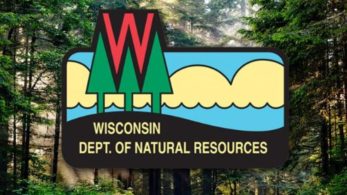At its August meeting, the Natural Resources Board approved new rules for white-tailed deer management in Wisconsin, including enhanced fencing at captive cervid facilities and additional restrictions on deer carcass transport.
Although the emergency measures have yet to be signed by Gov. Scott Walker, all parties involved expect the rules to in force for the Sept. 15 opening of the 2018-’19 Wisconsin bow deer seasons.
The changes won’t appear in the 2018-’19 Department of Natural Resources deer hunting regulation pamphlet, since they were approved after the brochures were printed.
Many readers have asked questions about the pending changes. Here’s an explainer of what deer hunters should know for the upcoming season.
Why the change?
The rules are designed to reduce the spread of chronic wasting disease, a fatal deer disease. They were recommended by Gov. Walker in May.
Humans can increase the speed at which CWD is spread by moving infected animals, live or dead.
Since the prions that cause the disease can be spread in deer carcasses, the new rules include restrictions on how hunters handle their kills and move deer parts around the state.
What does the carcass transport rule say?
Hunters are generally prohibited from removing whole carcasses from a CWD-affected county.
However, there are two key exceptions: Whole carcasses can be removed from a CWD-affected county if they are taken to a licensed meat processor or permitted taxidermist. Hunters have 72 hours from the time the carcass is removed from a CWD-affected county to deliver it to the processor or taxidermist.
So if you are accustomed to bringing your deer to a licensed processor near your home, it is still allowable no matter where you killed the animal.
Why the exceptions?
Licensed meat processors and permitted taxidermists are required by the state to use authorized means of disposal that should contain prions from any infected animals, according to the intent of the rule.
Two details to consider: If you take the deer to a licensed processor and want to keep the rack, make sure it’s just the skull plate and antlers, no brain or tissue attached.
And if you take the deer to a taxidermist who removes the cape and head from the animal, in most cases you will still be in possession of the rest of the carcass, including the spine. In this case, you are responsible to take the remaining carcass to a licensed meat processor.
I process my own deer. What does the rule mean to me?
If you prefer to self-butcher a deer killed in a CWD-affected county, you are now required to do so before you remove it from the county.
This could be done at the point of kill or at a nearby site, but still within the county.
The rule allows the deer to be quartered or deboned with the head and spinal column remaining at the kill site, including on public land.
The idea behind this part of the new rule is to keep CWD prions in areas of the state where they are currently found, according to the DNR.
The rule also allows a deer head to be moved out of a CWD-affected county if it is being taken to a CWD testing kiosk or DNR office.
What deer parts can be moved?
The following deer parts can be moved out of a CWD-affected county: Deer meat that is cut and wrapped (commercially or privately); quarters that have no part of the spinal column attached; meat that has been deboned; hide with no head attached; antlers with no tissue attached; clean skull plates with no lymphoid or brain tissue attached; clean skulls; upper canine teeth.
The prions that cause CWD are concentrated in the brain, spine and other central nervous system tissues, according to the DNR.
As a hunter, what should I do to prepare for the new rules?
The first thing you should do is determine if the county or counties you deer hunt are declared CWD-affected.
As of late August, 55 Wisconsin counties were CWD-affected and 17 were not. The DNR has CWD-related information on its website at dnr.wi.gov.
If you hunt in a CWD-affected county, you should develop a plan in the event you kill a deer. Identify licensed meat processors and taxidermists, if appropriate.
If you plan to process the deer yourself, make sure you have sufficient tools and supplies to do the job away from home as well as to transport the meat.
What if I hunt in a non-CWD affected county?
If you kill a deer in one of the 17 counties not deemed CWD-affected (as of late August), you may handle the carcass as you have in the past, including transporting it home, to a processor, to a taxidermist or another site.
All normal registration rules still apply.
If the rule is signed as expected in the coming days by Gov. Walker, the DNR plans to issue instructions to hunters, including through its website.
The Milwaukee Journal Sentinel will provide links to such information when it becomes available.
